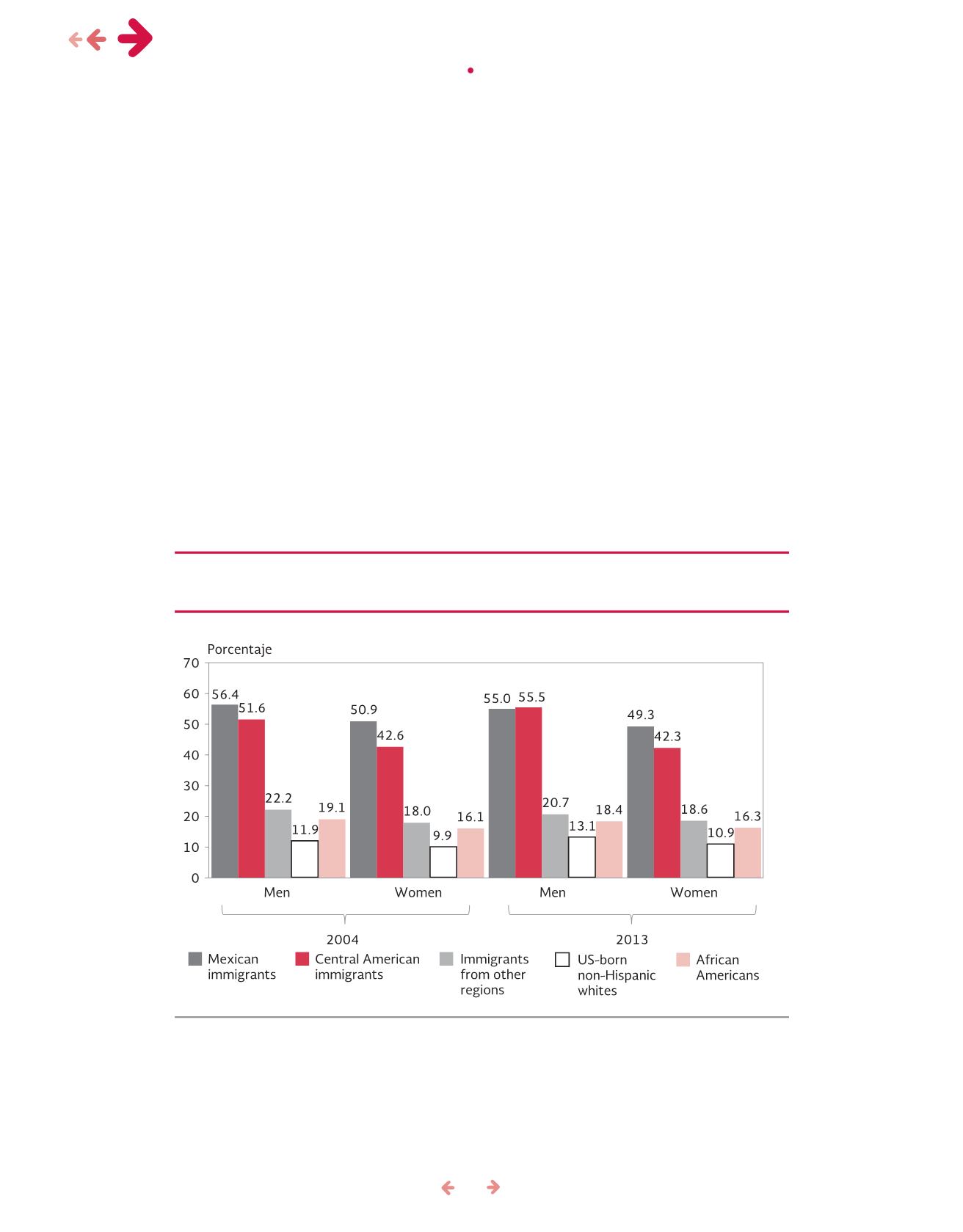
28
regions (27%). The improvement in health insurance
coverage for long-term immigrants is ten percentage
points amongMexican, 21 percentage points among
CentralAmericansandunder tenpercentamongother
immigrants, though the latter group has better living
conditions, regardless of their length of residence in
theUnitedStates.
Mexican immigrantwomenaremore likely
tohavehealth insurance thanmen
There is also inequality in the distribution of health
insurance coverage by gender, since out of the five
groups studied here, men record higher percentages
of exclusion from health insurance coverage than
women, though these disparities are higher among
Central American andMexican immigrants (56% and
42% in the first case, and 55% and 49% in the se-
cond, in 2013). However, in the Mexican population,
no significant changes occurred from one period to
another. Among Central Americans the gender gap in
uninsurancewas the largest of anygroupandwidened
fromninepercentagepoints in2004 to13percentage
points in2013 (Figure14).
The lackof health insuranceamongMexican
immigrants is accentuated in the18 to29
year agegroup
Ananalysis of health insurance coveragebyagegroup
shows the disadvantage faced byMexicans and Cen-
tral Americans at the various stagesof the life cycle.
Source: Migration Policy Bureau, SEGOB, based on U.S. Census Bureau,
Current Population Survey
(CPS), for March
2004andMarch2013. IntegratedPublicUseMicrodataSeries (IPUMS)USA,Minneapolis: UniversityofMinnesota.
Figure14. PopulationofUnitedStateswithout health insurance,
by regionof originandethnicityor race, basedongender, 2004and2013
migration & health •
mexican immigrants in the us: a 10 year perspective


